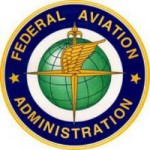On 23 June, the U.S. Federal Aviation Administration (FAA) published its interpretation of the “Special Rule for Model Aircraft,” which disgruntled quite of few people with an interest in flying model planes and helicopters. Many of those upset left critical feedback on the FAA’s website, but last week three groups went further and formally took legal action.
One of organizations to file suit is the Academy of Model Aeronautics, a not-for-profit group made up of some 170,000 modelers throughout the United States. In a filing made on 22 August, the AMA asserts that the FAA’s Special Rule contradicts the intent of Congress when it passed the FAA Modernization and Reform Act in 2012, part of which states: “[T]he Federal Aviation Administration may not promulgate any rule or regulation regarding a model aircraft, or an aircraft being developed as a model aircraft, if . . . the aircraft is operated in accordance with a community-based set of safety guidelines and within the programming of a nationwide community-based organization.”
The AMA points out that the FAA’s interpretation of the rules, which constrains modelers in many ways, including a prohibition on flying models for purposes that are in any fashion connected with a business, “threatens the very existence of the hobby, as well as AMA as an organization.” That’s because the FAA doesn’t allow manufacturers to fly their models as they develop and test them. Nor would it allow modelers to accept cash payment for winning competitions. Come to think of it, the FAA probably wouldn’t allow paid AMA officers to fly models themselves. No wonder they are upset.
A second group to file suit last week was made up of four businesses with a commercial interest in model aircraft: the UAS America Fund, SkyPan International, Peter Sachs (doing business as the Drone Pilots Association), and FPV Manuals (doing business as GetFPV and Lumenier).
The members of this group assert that the FAA’s prohibition on their non-hobby activities “is arbitrary, capricious, an abuse of discretion, or otherwise not in accordance with law, in excess of statutory jurisdiction, authority, or limitations, and without observance of procedure required by law.” Their filing points out that the current position of the FAA prevents, for example, a retailer of equipment used for flying models from testing the equipment out, which in turn makes it very difficult to decide what gear to sell or which devices will best support customers with technical issues.
The third group to take legal action last week was the Council on Governmental Relations, an association of university researchers. The Council’s filing asserts that the FAA’s rule “poses a grave threat to science, research, education, and technological innovation across the United States by purporting to regulate, restrict, or even completely prohibit, use of model aircraft technology by universities, colleges, and research institutions, their faculty, and their students.” The objection here is basically the same one a group of educators voiced to the FAA last month.
Anthony Decrappeo, president of the Council on Governmental Relations, explains that the organization doesn’t typically resort to legal action. “Usually, it’s not necessary,” he says. “But I have to rely on what the legal counsel is telling me.” In this case that would be Brendan Schulman, special counsel with the New York City law firm Kramer, Levin, Naftalis & Frankel.
“In part, there is a process issue here,” says Schulman, referring to the way the FAA has been issuing rules about model aircraft without first making a formal Notice of Proposed Rulemaking, as required for a federal agency by the Administrative Procedure Act. But Schulman also thinks that the FAA needs to base its rules regarding what is and what isn’t safe on something other than whether the activity has a commercial component.
Presumably, the FAA will do that when it issues its much-awaited regulations for small unmanned aerial systems (sUAS). According to Schulman, the FAA’s interpretation of the Special Rule for Model Aircraft was meant to tell those who would use models for commercial purposes that “until we have something in place, you shouldn’t do anything at all.”


I have even had general public comment that I can’t fly over a city park if I have a camera on board…this is getting ridiculous.